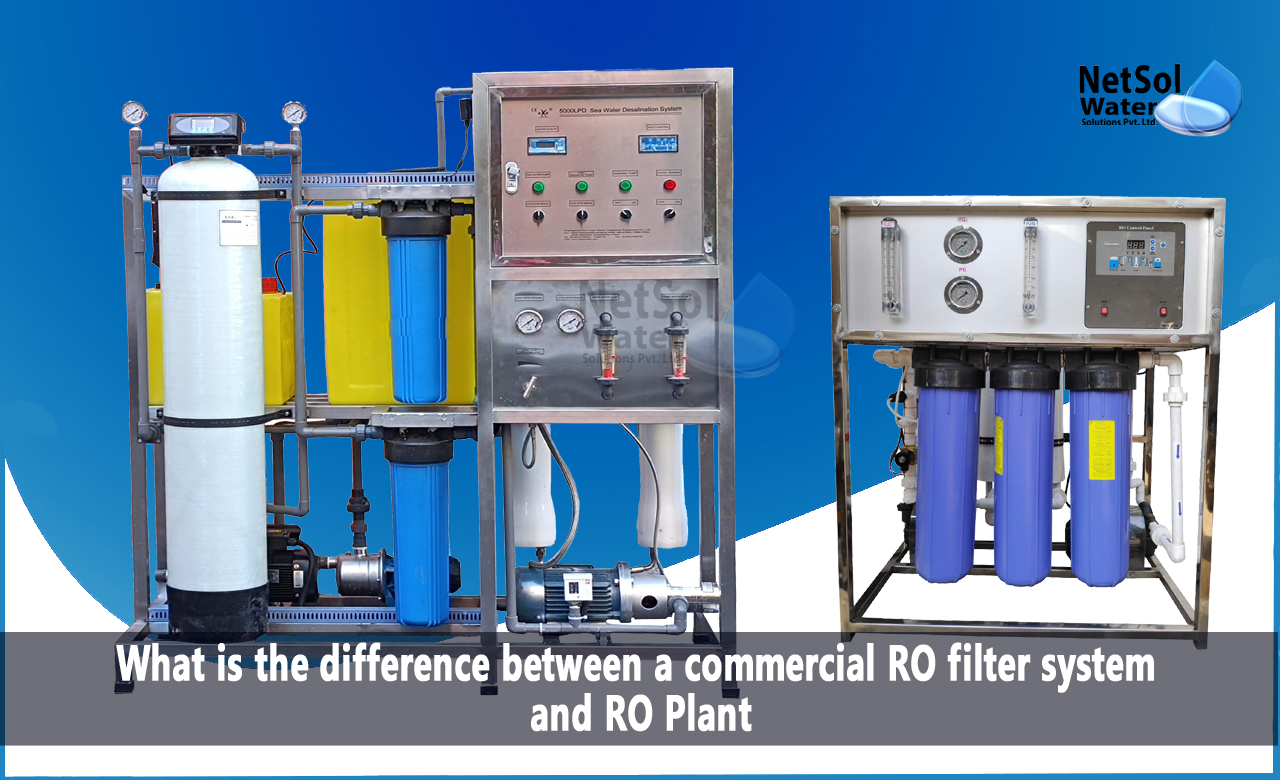What is the difference between a commercial RO filter system and RO Plant?
Reverse osmosis (RO) is a water treatment technology that uses a semipermeable membrane to remove dissolved minerals and other contaminants from water. This technology is commonly used in both commercial and industrial applications, including food and beverage production, pharmaceutical manufacturing, and power generation.
In this blog, we will discuss the differences between a commercial RO filter system and an RO plant.
Commercial RO Filter System
A commercial RO filter system is a water treatment system that is designed to purify water for commercial and small industrial applications. These systems typically have a capacity of a few hundred to a few thousand gallons per day. Commercial RO systems are commonly used in applications such as restaurants, coffee shops, and small manufacturing facilities where a reliable source of high-quality water is needed for daily operations.
The primary components of a commercial RO system include:
1. Pre-filtration: Water enters the system and passes through a series of pre-filters, which remove sediment and other larger particles that can clog the RO membrane.
2. RO membrane: The pre-filtered water is then forced through a semipermeable membrane, which removes dissolved minerals and other contaminants.
3. Post-filtration: The purified water is then sent through a post-filter, which removes any remaining impurities and improves the taste and quality of the water.
4. Storage tank: The purified water is stored in a tank until it is needed for use.
5. Recirculation system: Some commercial RO systems are equipped with a recirculation system, which allows water to be circulated back through the system to improve efficiency and reduce waste.
RO Plant
An RO plant is a larger water treatment system that is designed to treat a much larger volume of water than a commercial RO system. RO plants are typically used in industrial applications such as power generation, desalination, and the production of purified water for large-scale manufacturing processes.
The primary components of an RO plant include:
1. Pre-treatment: Water enters the system and passes through a series of pre-treatment filters, which remove larger particles, suspended solids, and other impurities that can clog the RO membrane.
2. RO membrane: The pre-treated water is then forced through a semipermeable membrane, which removes dissolved minerals, salts, and other contaminants.
3. Post-treatment: The purified water is then sent through a series of post-treatment filters, which remove any remaining impurities and adjust the pH level of the water to meet the required standards.
4. Storage tank: The purified water is stored in a tank until it is needed for use.
5. Chemical dosing system: Some RO plants are equipped with a chemical dosing system, which adds chemicals to the water to adjust the pH level and prevent the buildup of scale on the RO membrane.
Conclusion:
The primary difference between a commercial RO filter system and an RO plant is their size and capacity. Commercial RO systems are designed to treat a smaller volume of water for commercial and small industrial applications, while RO plants are designed to treat a much larger volume of water for industrial applications. While both systems use the same basic technology, there are significant differences in their design, operation, and cost. It is important to carefully consider the specific needs of your application and the advantages and disadvantages of each system before selecting the right solution for your business or industry.
Do you need an advice or assistance on selecting the best water and waste water treatment unit? We have solutions for all your problems!
Let us now your problem, our experts will make sure that it goes away.
For an assistance or related query,
Call on +91-965-060-8473
Or write us at enquiry@netsolwater.com



